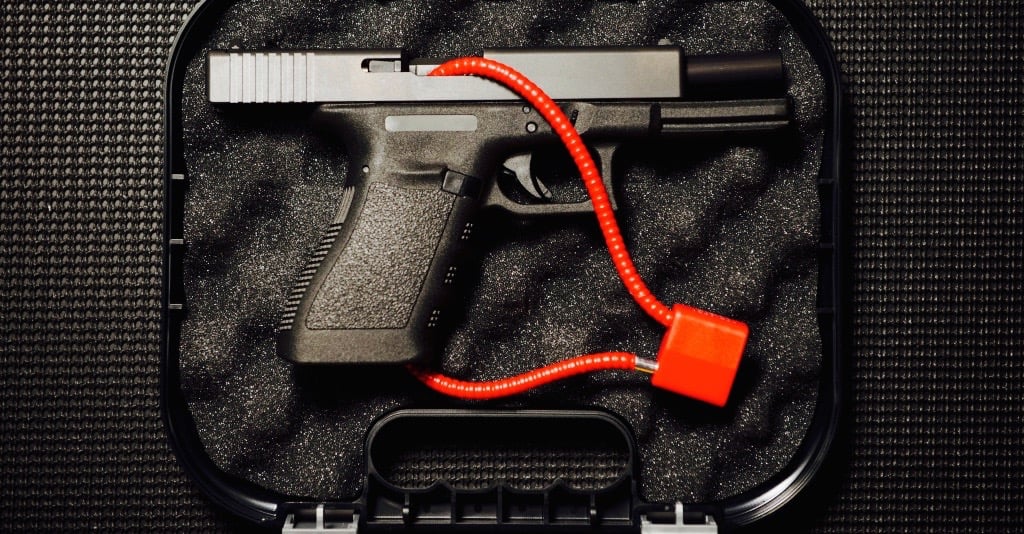Public health researchers already know that the safe storage of guns can significantly reduce self-inflicted and unintentional firearm injuries in the home. What’s been less clear is whether programs that promote storing firearms locked, unloaded, and separate from ammunition actually convince gun owners to do so.
It’s that open question that spurred a team from the University of Washington to embark on a systematic review of available research to determine how well varying safe storage interventions work. Their study, published this month in Epidemiologic Reviews, a leading public health journal, found a strong indication that safe storage programs are effective, with an important caveat: Participants were much more likely to comply when provided with a free device to secure their firearms.
“Before we did this review, we didn’t know which interventions would prove to be the most effective,” Ali Rowhani-Rahbar, the study’s lead author, tells The Trace.“But the totality of the findings indicate that giving individuals these devices, augmented by counseling, may be a fruitful, effective strategy to promote safe firearm storage.”
To conduct the study, Rowhani-Rahbar and his colleagues Joseph Simonetti and Frederick Rivara combed through electronic databases for research on safe gun storage intervention methods. They focused exclusively on studies that used randomized or quasi-experimental trials — two of the most sound methods of conducting research — and ended up with seven studies that met their selection criteria. Six of the studies used safe storage programs that incorporated counseling on the risks of having unsecured guns in the home, and two of those also provided firearms owners with a free gun lock. One program studied provided whole gun cabinets to participants in rural Alaska, but no counseling — only instructions to lock household firearms in the cabinet and keep its key in a secure location.
The intervention programs that gave participants free storage devices were decidedly more effective. When subjects were given counseling and a cable lock, the share practicing safe storage increased by 9.7 percent. In the program where participants received a free gun cabinet, only 35 percent of the intervention group reported having unlocked guns in their homes in a follow-up report, compared to 89 percent of the control group. Among the programs that provided just counseling, only one produced a significant improvement in storage practices.
“If they didn’t actually give the device to participants — even if they provided a coupon or discount to buy a lock — the interventions didn’t work,” Rowhani-Rahbar says.
Federal law mandates that a “secure storage or safety device” be provided with every gun sold or transferred at a federal firearms dealer, but the same does not apply to private sales. Some states, like California, have passed laws to fill that void, and require that all guns sold and transferred be locked. The issue becomes more contentious — and politicized — when legislators turn their attention to how guns are stored in the home: States like Massachusetts have passed laws that criminalize the storage of unlocked firearms, but many pro-gun advocates argue that such requirements hinder their ability to use firearms in self-defense. And last fall, gun safety groups sparred with the National Shooting Sports Foundation, an industry trade group, over a $2.4 million federal grant to distribute free gun safety kits, which include steel cable locks.
An informed debate is hampered by the dearth of firearms research in the U.S., which Rowhani-Rahbar says is reflected in the the small number of studies available on the topic of safe storage.
“Based on the evidence that we have, which is certainly not enough, there are strong indications that actually, they do work,” Rowhani-Rahbar says. “But we need to accumulate much more evidence, because some questions are really hard to answer with only seven studies.”
One example of those questions: What’s the best setting for conducting a safe storage campaign? Most of the studies in Rowhani-Rahbar’s review provided counseling in a clinical setting — at pediatric practices, for example — but that doesn’t address whether the information is better delivered by doctors or distributed via educational materials, public service announcements, or gun stores. Researchers also don’t know which populations of gun owners they should target to make interventions more successful. While men are more likely to own a gun, mothers are more likely to accompany their children to the pediatrician.
Without more data to work with, Rowhani-Rahbar is left to point to the elementary issue that his research begins to sort out. “We’re not there yet,” he says, “but we know that [safe storage programs] are definitely worthy of consideration.”
[Photo: Shutterstock]

